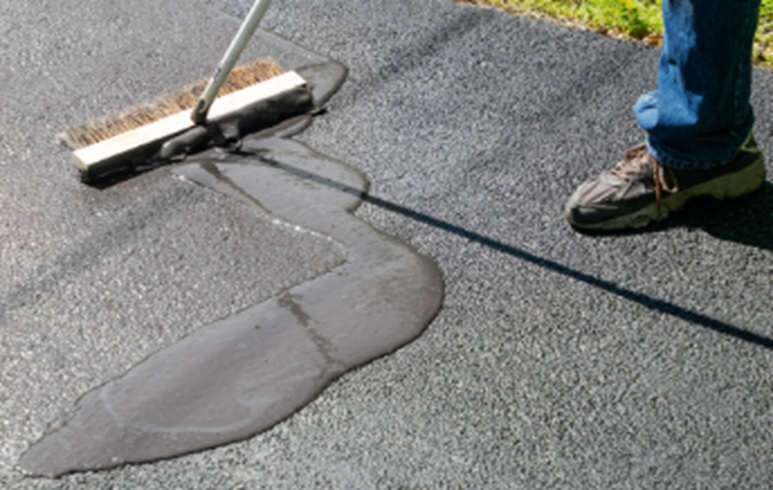Minimalism is more than just a design trend; it’s a lifestyle choice that emphasizes simplicity, functionality, and clean lines. In the kitchen, where space, functionality, and aesthetics need to coexist seamlessly, a minimalist design can create a calm and organized environment. When it comes to countertops, choosing the right material and design is crucial for maintaining the minimalist ethos. A simple, unadorned countertop can serve as both a functional work surface and a beautiful design element that enhances the overall space.
If you’re aiming to design a minimalist kitchen, it’s essential to focus on understated elegance, where every element serves a purpose without unnecessary embellishments. Here’s how to achieve the perfect minimalist kitchen with simple countertop options.
1. Embrace Clean Lines with Neutral-Colored Countertops
The foundation of a minimalist kitchen is simplicity, and one of the most effective ways to achieve this is through neutral-colored countertops. Materials in shades of white, grey, beige, or black create a sleek, timeless look that doesn’t overpower the space. These neutral tones also promote a sense of calm and openness, making them perfect for small kitchens or spaces with limited natural light.
- White Countertops: White countertops, whether in marble, quartz, or solid surface materials, are a staple in minimalist kitchens. The crisp, clean appearance of white surfaces can open up a space and reflect light, making your kitchen feel more airy and spacious. White countertops pair effortlessly with a wide variety of cabinetry, whether you opt for dark wood, black, or even light, natural finishes. Marble with subtle veining or a solid white quartz countertop can provide a polished, serene aesthetic.
- Grey Countertops: For those who want a bit more depth without straying from a minimalist theme, grey countertops offer a sophisticated alternative. Light grey or dove grey countertops can achieve the same clean, open feeling as white but with a touch of warmth and richness. Darker greys or charcoal tones add contrast while maintaining the minimalist focus on simplicity and elegance.
- Beige and Taupe Countertops: Beige and taupe materials bring warmth to a minimalist kitchen without adding visual clutter. These shades work beautifully with natural wood elements and soft-toned cabinetry, creating a balanced, welcoming environment. Materials like limestone, concrete, or even light-colored quartz in beige or taupe are ideal choices for a cozy yet modern kitchen space.
- Black Countertops: For a striking, modern aesthetic, black countertops can be used to add drama while maintaining a minimalist approach. Black granite, quartz, or solid surfaces can ground the space, creating contrast against lighter cabinets or walls. It’s important to keep the rest of the kitchen simple with clean lines and minimal adornment to ensure the black countertops don’t overwhelm the space.
2. Opt for Sleek, Seamless Surfaces
Minimalist kitchens often feature surfaces with little to no visual interruption. Choosing countertops that have a seamless finish not only enhances the aesthetic but also reduces the maintenance required. Seamless countertops create a smooth, uninterrupted surface that eliminates grout lines, edges, and seams, which can sometimes make a kitchen feel cluttered.
- Solid Surface Countertops: Materials like Corian or acrylic solid surfaces are excellent choices for a seamless look. These countertops are non-porous, easy to clean, and can be molded to create curves or unusual shapes without visible seams. Solid surfaces are available in a wide range of colors and finishes, making them versatile enough for any minimalist design.
- Engineered Stone: Quartz is a popular engineered stone that offers a virtually seamless countertop option. With quartz, you can achieve a smooth, consistent appearance without worrying about the irregularities found in natural stones like granite or marble. This material is both durable and low-maintenance, offering the perfect combination of functionality and minimalist style.
- Concrete Countertops: Concrete is another material that can be poured into molds to create a seamless surface. While it offers an industrial, contemporary look, it can also be customized with various finishes to suit a minimalist aesthetic. Concrete countertops can be honed to a smooth, matte finish, contributing to the clean and sleek look of the kitchen.
3. Choose Subtle, Low-Profile Edging
When designing a minimalist kitchen, the details matter just as much as the overall aesthetic. Countertop edges are often overlooked but play an important role in maintaining a clean and simple look. Opt for subtle, low-profile edges that blend seamlessly with the overall design.
- Straight Edges: The simplest and most common edging choice for minimalist kitchens is the straight, squared edge. This clean-cut finish aligns with the modern aesthetic, ensuring that the countertop doesn’t draw unnecessary attention. A straight-edge countertop also complements other minimalist features like flat-panel cabinetry and simple hardware.
- Eased Edges: If you prefer a slightly softer look, an eased edge is an excellent option. This type of edge has a slight roundness, which creates a gentle, organic feel without detracting from the overall minimalist vibe. The eased edge maintains the sleek, modern look while adding just a touch of softness to the kitchen.
- Bullnose Edges: For a more rounded finish, the bullnose edge is an understated yet elegant option. This edge style has a smooth, rounded curve that softens the hard lines of the countertop. While more pronounced than straight or eased edges, the bullnose edge still complements minimalist design by offering clean, flowing lines.
4. Limit Patterns and Textures
In minimalist kitchens, less is more. Avoid overly intricate patterns or textures that can create visual clutter. Instead, opt for solid colors or subtle patterns that enhance the space without competing for attention.
- Monochromatic Patterns: Choose materials with a uniform appearance, such as plain white, grey, or black quartz or solid surface materials. While some natural stones like marble or granite feature beautiful veining, choose a more understated option with minimal patterning to keep the focus on simplicity.
- Smooth Textures: In minimalist kitchens, a smooth, polished countertop surface is often preferred. Glossy, polished finishes work well to reflect light and create a clean, shiny look. Matte or honed finishes are also popular for their understated appeal, providing a subtle depth without drawing attention away from other design elements.
- Subtle Veining: If you want to add some visual interest to your minimalist countertop, opt for materials with very subtle veining or patterning. For example, a marble countertop with fine, light veining offers just enough texture without taking away from the minimalist aesthetic.
5. Incorporate Integrated Features
To further streamline your minimalist kitchen, consider incorporating integrated features into your countertop design. Integrated sinks, cooktops, and storage elements not only enhance the functionality of your space but also contribute to a clean, uninterrupted surface.
- Integrated Sink: An integrated sink is built directly into the countertop material, creating a seamless transition between the sink and the countertop. This removes the need for visible seams, which can often break up the smooth lines of the kitchen. An integrated sink is perfect for a minimalist kitchen because it promotes the sense of flow and simplicity.
- Built-in Cooktop: Instead of a countertop with a separate cooktop, consider an integrated cooktop that sits flush with the surface. This option eliminates the visible boundaries between your cooking and preparation areas, enhancing the minimalist aesthetic while keeping everything organized and functional.
- Hidden Storage: Opt for countertops that offer hidden storage solutions or built-in shelves to maintain a clutter-free environment. Minimalist kitchens often rely on concealed storage to keep surfaces clear, so incorporating features like pull-out drawers or under-counter storage can keep everything neatly tucked away.
Final Thoughts
Designing a minimalist kitchen requires careful attention to detail, especially when selecting the right countertop materials. By choosing neutral colors, seamless surfaces, and subtle edging, you can create a space that feels open, functional, and calming. Keep patterns and textures minimal, and incorporate integrated features to maintain a clean and organized environment. Ultimately, a minimalist kitchen with simple countertops allows you to enjoy a sleek, stylish space that is as practical as it is beautiful.






